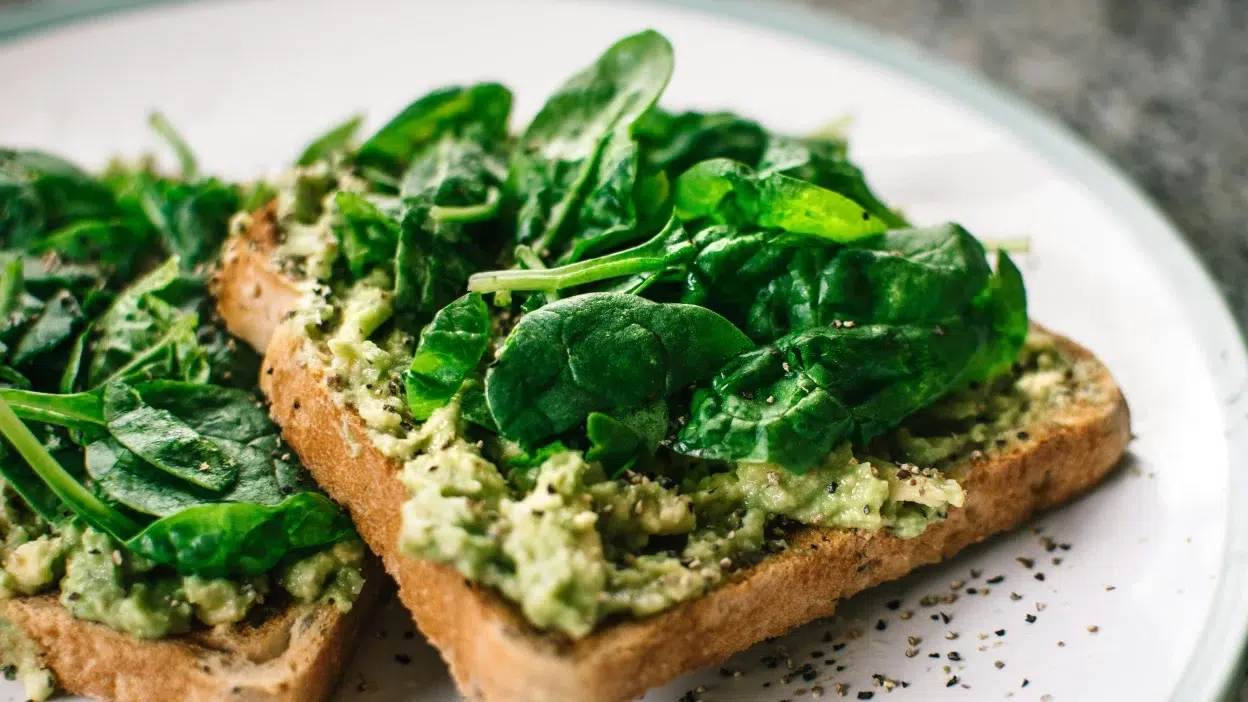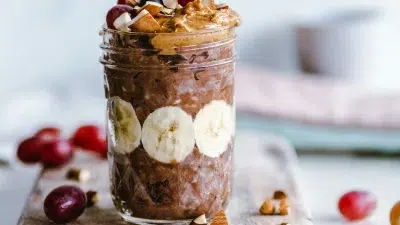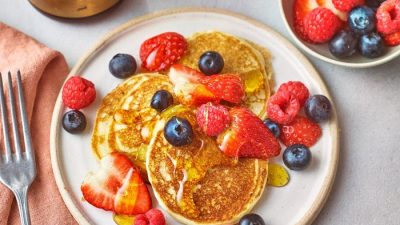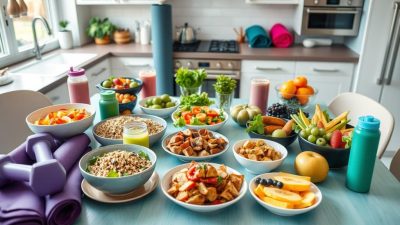Julia Child once said, “The measure of achievement is not winning awards. It’s doing something that you love, and doing it well.” This is true for gluten free diets too. It’s about making tasty meals that you love.
In this guide, I’m excited to share 30 easy and tasty gluten-free recipes. They will make your taste buds happy and your body healthy. You’ll find dishes for every meal, making gluten-free living easy and fun.
Key Takeaways
- Discover 30 easy and delicious gluten-free recipes for every meal of the day
- Explore recipes suitable for those with celiac disease, wheat allergies, or anyone seeking to reduce gluten intake
- Learn how to create satisfying and nutritious gluten-free meals without compromising taste
- Gain inspiration to embrace a gluten-free lifestyle with confidence and culinary creativity
- Discover the health benefits of a gluten-free diet and how it can improve overall well-being
Understanding Gluten Free Diets: A Comprehensive Guide
Starting a gluten-free diet can seem hard. But knowing the basics can help a lot. This guide will give you the info you need to start your gluten-free journey with confidence.
Common Ingredients to Avoid
It’s important to know which foods have gluten. Gluten can cause problems for people with gluten sensitivities or celiac disease. Wheat, barley, rye, and triticale are common culprits. Reading food labels and choosing naturally gluten-free foods can make shopping easier.
Safe Alternatives and Substitutions
There are many gluten-free options for your favorite foods. Look into gluten-free alternatives like rice and quinoa. Try allergen-friendly cooking options like almond flour. There are also dietary restrictions friendly products that can replace gluten-containing foods.
Health Benefits of Going Gluten-Free
Going gluten-free can be good for your health. It can help people with celiac disease or gluten sensitivity. It may improve digestion, energy, and even help with weight.
It also lets you eat more whole, nutritious foods. This supports your overall health.
“Going gluten-free has been a game-changer for my health. I’ve noticed a significant improvement in my digestion and overall energy levels.” – Sarah, a gluten-free lifestyle enthusiast
Understanding gluten-free diets can lead to a healthier life. Explore gluten-free alternatives, allergen-friendly cooking, and find the dietary restrictions that suit you best.
Essential Kitchen Tools for Gluten Free Cooking
Starting a gluten-free diet opens up new tasty options in the kitchen. But, you need special tools for grain-free baking and cooking. I’ve found some key gadgets that help a lot with gluten-free cooking.
A top-notch grain-free baking blend is a big help. These mixes, with almond, coconut, or cassava flour, give baked goods structure and texture. Brands like Bob’s Red Mill and King Arthur make great gluten-free alternatives.
- Silicone baking mats or parchment paper: These non-stick surfaces are a must-have for preventing grain-free doughs from sticking to traditional bakeware.
- A stand mixer or hand mixer: The additional power and versatility of these appliances makes it easier to incorporate air into gluten-free batters and doughs, resulting in lighter, fluffier textures.
- Nut milk bags or cheese cloths: These tools come in handy for straining homemade nut or seed milks, which can be used as a dairy-free alternative in recipes.
| Kitchen Tool | Purpose | Recommended Brands |
|---|---|---|
| Grain-free Baking Blend | Provides structure and texture for gluten-free baked goods | Bob’s Red Mill, King Arthur, Namaste Foods |
| Silicone Baking Mats | Non-stick surfaces for preventing dough from sticking | Silpat, AmazonBasics, Artisan Baker |
| Stand Mixer or Hand Mixer | Incorporates air into gluten-free batters and doughs | KitchenAid, Cuisinart, Hamilton Beach |
| Nut Milk Bags | Strains homemade nut or seed milks for dairy-free recipes | NutraMilk, Ellie’s Best, Vremi |
With these tools, you’ll get better at grain-free baking. You’ll make tasty gluten-free alternatives for your favorite dishes.
Breakfast Ideas: Start Your Day the Gluten Free Way
Starting your day gluten-free is easy and tasty. There are many healthy gluten-free breakfasts to choose from. You can find quick meals or enjoy a slow weekend brunch.
Quick Breakfast Options
When you’re in a hurry, try these quick gluten-free breakfasts:
- Overnight oats with fresh berries and honey
- Gluten-free yogurt parfait with granola and fruit
- Scrambled eggs, spinach, and gluten-free toast
Make-Ahead Breakfast Recipes
Make mornings easier with these make-ahead gluten-free breakfasts:
- Gluten-free breakfast burritos with eggs and cheese
- Blueberry and almond flour muffins for up to a week
- Crustless quiche with veggies and gluten-free protein
Weekend Brunch Favorites
For a special weekend brunch, try these gluten-free recipes:
| Recipe | Ingredients | Prep Time |
|---|---|---|
| Gluten-Free French Toast | Gluten-free bread, eggs, almond milk, cinnamon, vanilla extract | 20 minutes |
| Cauliflower Hash Browns | Cauliflower, eggs, gluten-free flour, salt, pepper | 30 minutes |
| Gluten-Free Pancakes | Gluten-free flour, baking powder, eggs, almond milk, maple syrup | 25 minutes |
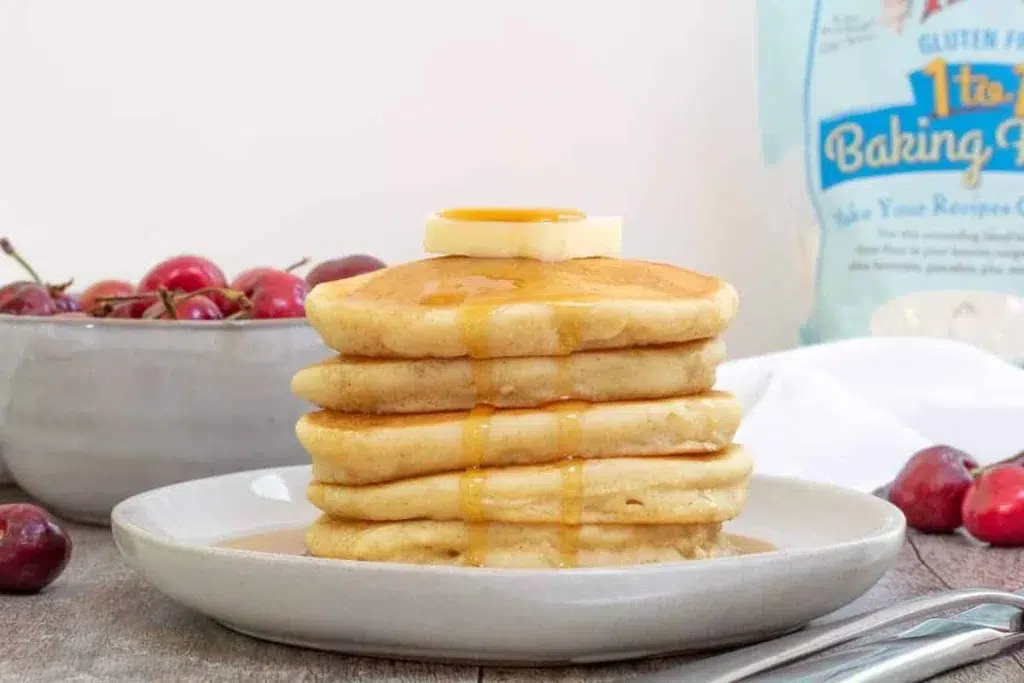
Begin your day with these tasty gluten-free breakfasts. Enjoy a healthy meal, even on busy mornings.
Simple Gluten Free Recipes for Lunch
Keeping a celiac diet or cooking without allergens doesn’t mean missing out on lunch. We’ll look at easy, tasty gluten-free lunch recipes. They’re good for you and fun to eat.
One great option is creamy roasted red pepper soup. It’s quick to make and goes well with a salad or gluten-free sandwich. For something more filling, try a quinoa and black bean bowl. It’s full of protein and flavor.
For a handheld meal, make a grilled chicken wrap. Use a gluten-free tortilla or lettuce leaves. Add your favorite toppings and veggies for a balanced meal.
Gluten-Free Lunch Ideas
- Creamy roasted red pepper soup
- Quinoa and black bean power bowl
- Grilled chicken wrap with gluten-free tortilla or lettuce leaves
- Tuna salad on a bed of mixed greens
- Vegetable-packed frittata slices
- Lentil and sweet potato curry with basmati rice
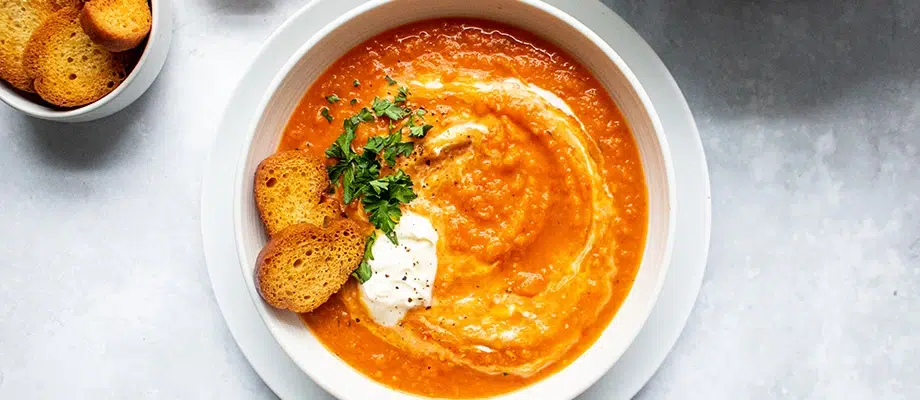
| Dish | Prep Time | Cooking Time | Allergens |
|---|---|---|---|
| Creamy Roasted Red Pepper Soup | 10 minutes | 30 minutes | Gluten-free, dairy-free, nut-free |
| Quinoa and Black Bean Power Bowl | 15 minutes | 20 minutes | Gluten-free, dairy-free, vegetarian |
| Grilled Chicken Wrap | 5 minutes | 10 minutes | Gluten-free, dairy-free, nut-free |
Adding these easy, tasty gluten-free lunches to your day can make mealtime fun. Try new recipes and ingredients. Find the perfect gluten-free meals that taste great and fit your celiac diet or allergen-friendly cooking needs.
Main Course Dishes for Every Occasion
Creating tasty gluten-free main dishes for all occasions is key for those on a gluten-free diet. We have recipes for family dinners, special meals, and easy one-pot dishes. Our selection is diverse and delicious, making sure you have something for every need.
Family-Friendly Dinner Options
Bring the family together with these gluten-free main dishes. They are tasty and easy to make. Choose from grilled chicken, beef stew, and more.
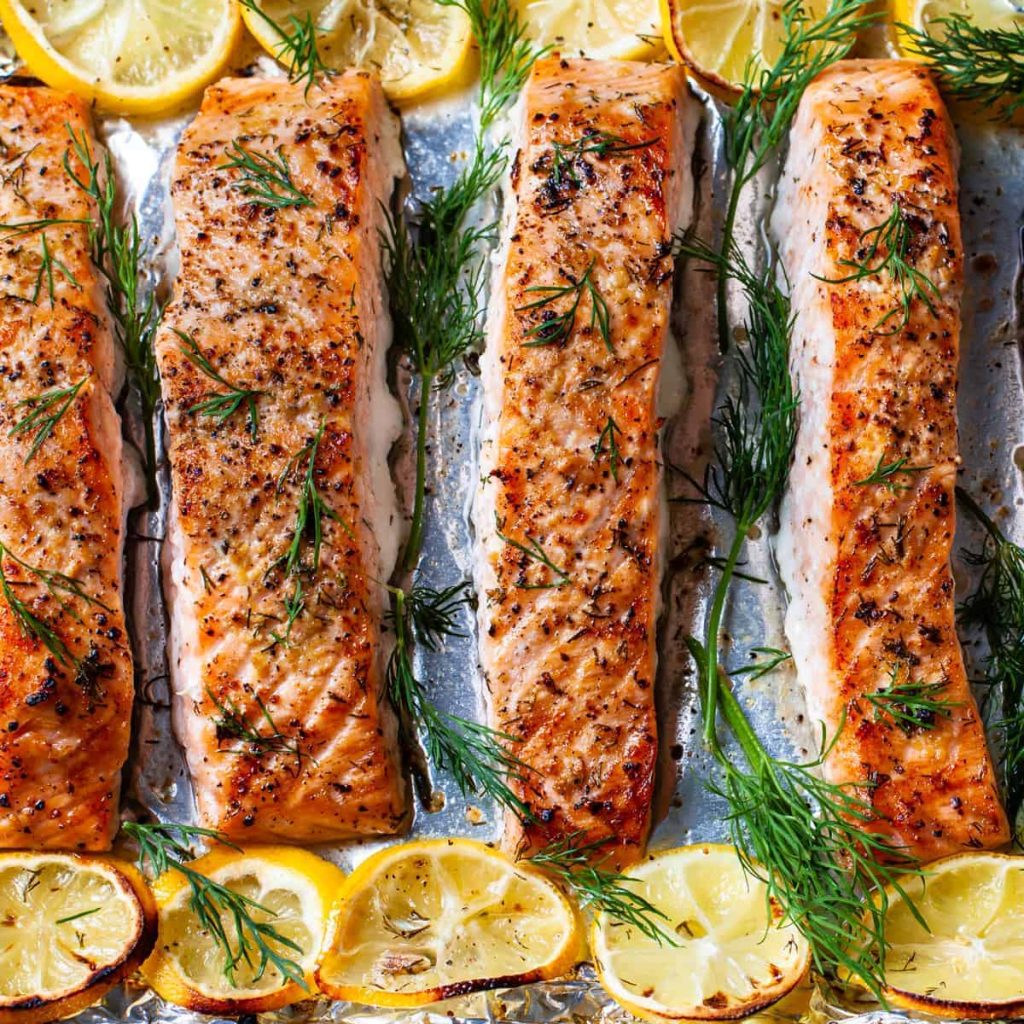
- Baked Salmon with Lemon and Dill
- Gluten-Free Lasagna with Vegetable Noodles
- Slow-Cooker Chicken Tikka Masala
Special Occasion Meals
Make your gluten-free meals special with these recipes. They’re perfect for big events. Try roasted pork, grilled lamb, and more.
- Herb-Crusted Rack of Lamb
- Seared Scallops with Cauliflower Puree
- Roasted Vegetable Tart with Quinoa Crust
One-Pot Gluten-Free Dinners
Save time on busy nights with these one-pot recipes. They’re quick and easy to clean up. Enjoy chicken and dumplings, beef and broccoli, and more.

| Recipe | Prep Time | Cook Time |
|---|---|---|
| Creamy Mushroom Chicken Skillet | 15 minutes | 30 minutes |
| Gluten-Free Chili with Sweet Potato | 20 minutes | 45 minutes |
| One-Pan Salmon and Asparagus | 10 minutes | 25 minutes |
Explore the world of gluten-free main dishes. From family favorites to special meals and quick one-pots, there’s something for everyone. Make your meals exciting and satisfying.
Baking Without Gluten: Tips and Techniques
Living without gluten doesn’t mean you can’t bake. You can make tasty treats with grain-free baking and gluten-free alternatives. We’ll show you how to bake yummy foods that everyone can enjoy.
Flour is key in grain-free baking. You can’t use regular wheat flour. But, there are many gluten-free alternatives like almond, coconut, or gluten-free all-purpose flour. Mixing different flours helps get the right texture and taste.
Binding agents are also important in gluten-free baking. They help hold the dough together like gluten does. Use xanthan gum, psyllium husk, or flax eggs to keep your baked goods from falling apart.
| Gluten-Free Flour Alternatives | Binding Agents |
|---|---|
| Almond flour | Xanthan gum |
| Coconut flour | Psyllium husk |
| Gluten-free all-purpose flour | Flax eggs |
Changing the texture and taste of your baked goods is crucial in gluten-free baking. Try adding extra moisture or using nut butters. You can also add spices and extracts for flavor. With practice, you’ll get better at baking without gluten.
The journey of gluten-free baking is fun and full of discovery. Enjoy the challenge and the tasty results. Happy baking!
Quick and Easy Gluten Free Snacks
Eating healthy and avoiding allergens is easy. There are many tasty gluten-free snacks out there. They are perfect for quick energy boosts or fun treats for kids.
On-the-Go Snack Ideas
Need a fast, healthy snack? Try these:
- Nut and seed butter packets with gluten-free crackers or apple slices
- Roasted chickpeas or edamame
- Homemade gluten-free trail mix with nuts, seeds, and dried fruit
- Fresh fruit and vegetable slices with hummus or guacamole
- Gluten-free granola bars or protein bars
Kid-Friendly Options
Keeping kids happy and healthy is simple with gluten-free snacks. Here are some fun options:
- Gluten-free animal crackers or graham crackers
- Fruit and vegetable puree pouches
- Homemade gluten-free muffins or energy bites
- Rice cakes with nut or seed butter and sliced bananas
- Gluten-free popcorn or rice cakes with melted chocolate chips
Adding these snacks to your daily routine is easy. They help you eat healthy and make your kids happy.
Meal Prep and Storage Guidelines
Living gluten-free means you need to plan and prepare well. Gluten free recipes and healthy eating need good meal prep and storage. These steps help save time, cut down on waste, and keep your food fresh and healthy.
Batch cooking is a great strategy for gluten free recipes and healthy eating. Cook big batches of your favorite dishes like soups, stews, or casseroles. Then, split them into single servings. This makes meal planning easier and gives you quick meals for busy days.
- Get good airtight containers for your meals. They keep food fresh and safe from contamination.
- Write what’s inside and when you made it on the containers. This helps you remember when to eat them.
- Freeze gluten-free foods in containers made for freezing. Make sure there’s room for food to expand.
Storing food right is key for keeping gluten free recipes good and safe. Learn how long to keep gluten-free foods like flours, breads, and baked goods. Check the packaging or trusted sources for the best storage times to keep food fresh and safe from gluten.
| Gluten-Free Item | Refrigerator (40°F or below) | Freezer (0°F or below) |
|---|---|---|
| Bread, baked goods | 3-5 days | 2-3 months |
| Flours, starches | 6-12 months | 1 year |
| Cooked meals | 3-4 days | 2-3 months |
Learning to prep and store meals well lets you enjoy tasty, gluten free recipes while eating healthy. With some planning and organization, you can make your gluten-free life easier and less stressful.
Embracing a Gluten-Free Lifestyle: Beyond the Kitchen
Living without gluten is more than just cooking at home. It’s about how we live our lives, from eating out to traveling. We need to think about all parts of our lives, not just cooking.
Eating out can be hard if you can’t eat gluten. But, you can find places that are safe. Look for restaurants that have gluten-free options. They can make food just for you.
- Look for restaurants with clear labeling or dedicated gluten-free sections on their menus.
- Communicate your dietary needs to the staff and request that your food be prepared in a separate, clean area.
- Explore cuisines that naturally lend themselves to gluten-free options, such as Asian or Latin American dishes.
Traveling can also be tricky. But, with some planning, it can be easy. Find out where you can eat gluten-free in your destination. Bring your own food to be safe.
| Gluten-Free Travel Tips | Benefits |
|---|---|
| Research gluten-free-friendly destinations | Ensures access to suitable dining and shopping options |
| Carry a gluten-free travel card or translation guide | Helps communicate your dietary needs in different languages |
| Pack a versatile selection of gluten-free snacks and staples | Provides a safety net and peace of mind during your travels |
Living gluten-free also means being open with friends and family. Tell them about your diet. Bring your own food to parties. This way, you can still have fun and stay safe.
By thinking about all parts of our lives, we can live fully gluten-free. This makes our lives healthier and happier. Always put your health first, and you’ll do great in any situation.
Conclusion
The world of gluten-free recipes is big and tasty. Learning about a gluten-free diet and using the right tools is key. You can start a journey of healthy eating and allergen-friendly cooking.
Experimenting and being open-minded is important. Try new things and mix flavors. This guide is just the start. Use it to create your own gluten-free dishes.
A gluten-free lifestyle is more than just avoiding certain foods. It’s about exploring new tastes and eating well. Enjoy the challenge, have fun cooking, and enjoy the tasty results. Bon appétit!
FAQ
What are the most common ingredients to avoid on a gluten-free diet?
On a gluten-free diet, avoid wheat, barley, rye, and triticale. These grains have gluten. It’s bad for people with celiac disease or a wheat allergy.
What are some safe gluten-free alternatives and substitutions?
Safe alternatives include rice, quinoa, and corn. Buckwheat and gluten-free flour blends are also good. Use them in baking and cooking.
What are the potential health benefits of following a gluten-free diet?
A gluten-free diet helps those with celiac disease or wheat allergy. It reduces symptoms and inflammation. It also improves digestion.
Even without a condition, it can boost energy and clear skin. It may also reduce bloating and discomfort.
What are some essential kitchen tools for gluten-free cooking and baking?
You’ll need a good food processor or blender for gluten-free flour. Also, nested mixing bowls and silicone mats or parchment paper are key. Durable, non-stick bakeware prevents sticking and crumbling.
What are some quick and easy gluten-free breakfast ideas?
Try overnight oats or gluten-free granola for quick breakfasts. Smoothies with dairy-free milk and fruit are also great. Make gluten-free pancakes or waffles on weekends.
What are some simple gluten-free lunch recipes?
For lunch, make hearty salads or veggie-packed soups. Use gluten-free bread or lettuce wraps for sandwiches. Meal-prep gluten-free grain bowls or pasta dishes.
What are some family-friendly gluten-free dinner ideas?
Baked chicken with roasted veggies is a hit. Gluten-free pasta with homemade marinara sauce is also tasty. Beef or veggie stir-fries over rice or quinoa are crowd-pleasers.
What are some tips for successful gluten-free baking?
Use a quality gluten-free flour blend for baking. Add xanthan or guar gum for structure. Adjust cooking times and temperatures to avoid dryness or crumbling.
What are some easy and convenient gluten-free snack ideas?
Fresh fruits and veggies with hummus are great snacks. Roasted nuts and gluten-free crackers are also good. Homemade energy bites or bars are easy to make.
How can I meal prep and properly store gluten-free foods?
Focus on recipes that freeze well, like soups and casseroles. Store gluten-free items in airtight containers. Be careful of cross-contamination in the kitchen. Proper storage keeps food fresh and safe.


